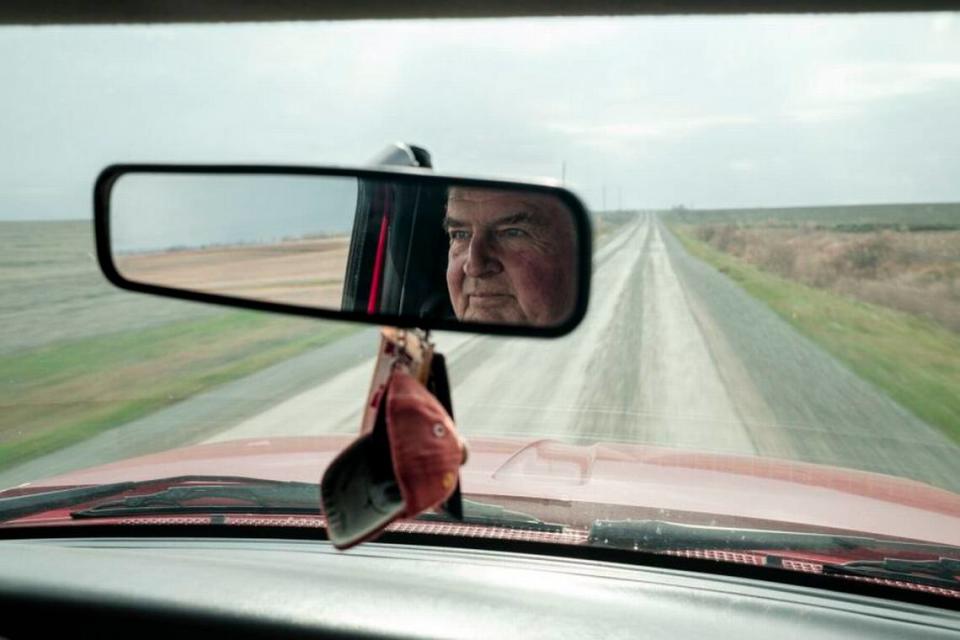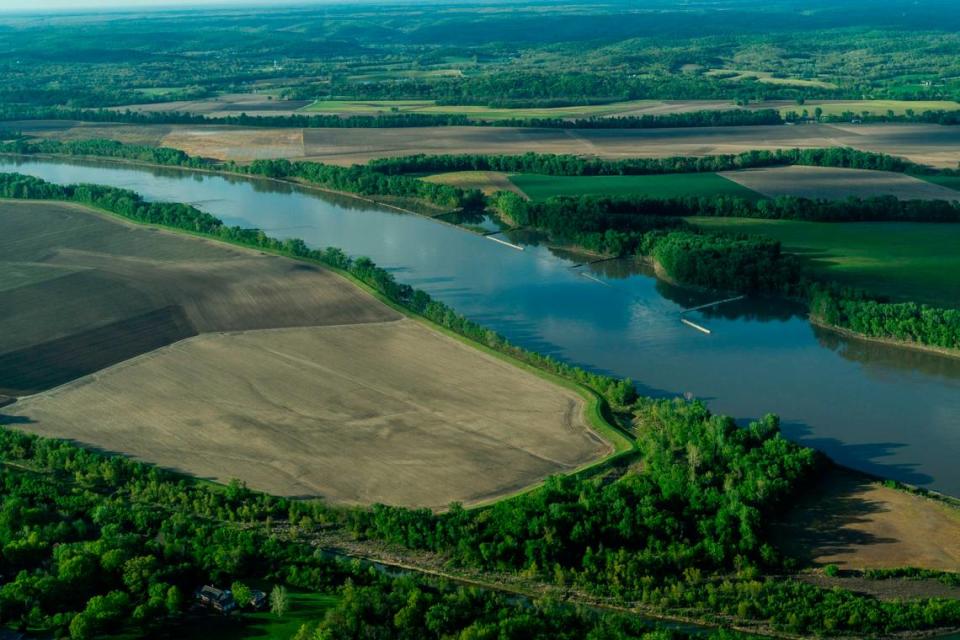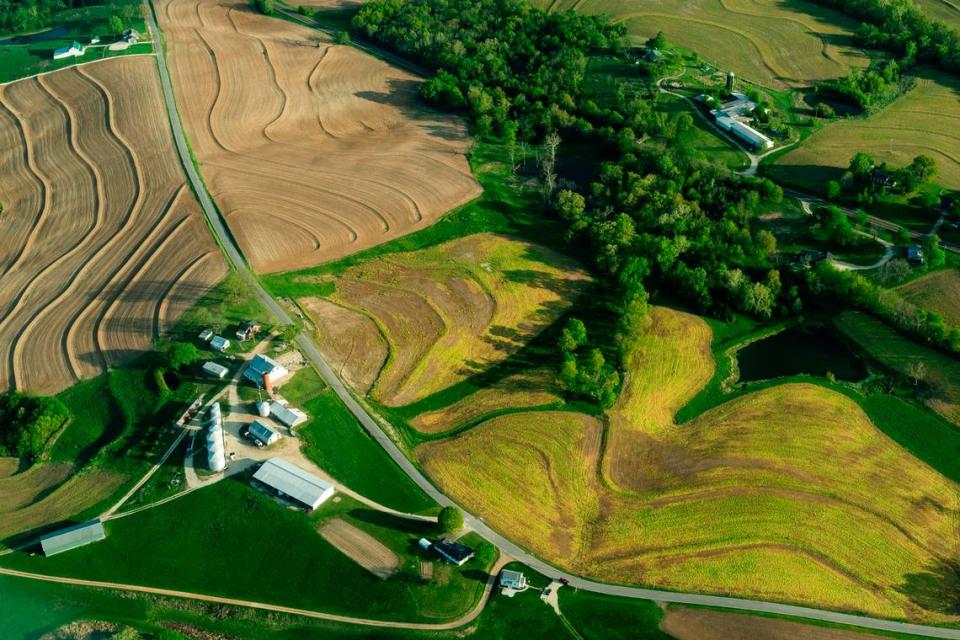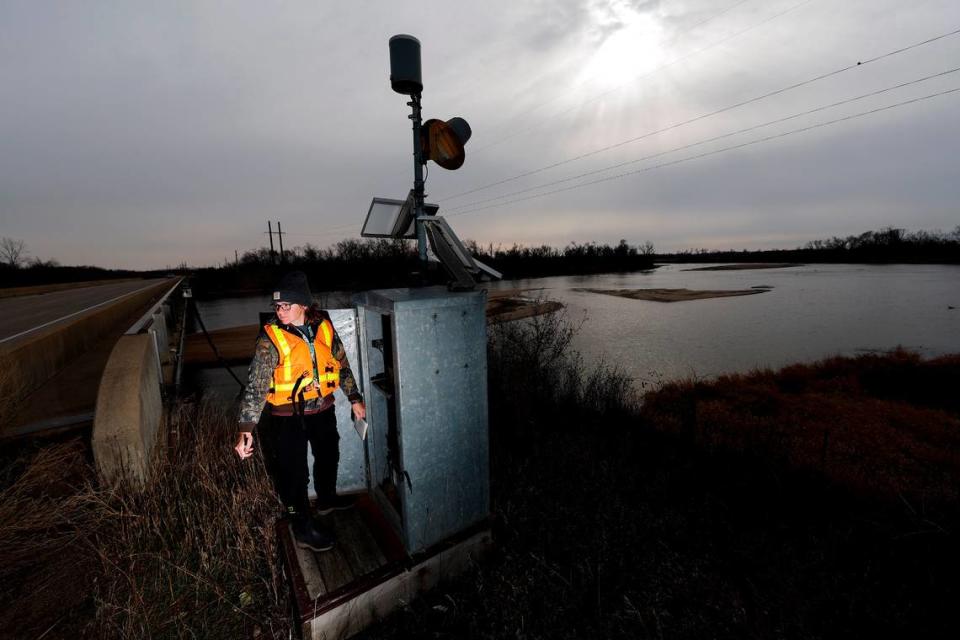Farm to Trouble: As conservation lags, so does progress in slashing Gulf’s ‘dead zone’
Editor’s note: This is the first in a five-story series that will examine the slow progress being made on reducing harmful agricultural runoff from the Mississippi River basin, which causes a low-oxygen “dead zone” in the Gulf of Mexico that threatens wildlife and fisheries.
CEDAR RAPIDS, Iowa – The cover crop that blankets Dan Voss’ farmland from late fall into the spring comforts the Eastern Iowa farmer because he knows heavy spring rain won’t wash away his topsoil. These off-season crops also soak up excess fertilizer.
But for every Dan Voss, there are a thousand U.S. farmers not growing cover crops or using other conservation practices shown to reduce runoff.
Other agricultural practices – more tile drainage, more livestock and more fertilizer – are thwarting plans to slash nitrogen and phosphorus washing down the Mississippi River to the Gulf of Mexico, where excess nutrients threaten wildlife and fishing industries.
“The agricultural community, we need to get with it,” Voss said.

Just one year away from a 2025 deadline to reduce nitrate and phosphorus entering the Gulf by 20%, success seems unlikely.
The Gulf of Mexico Hypoxia Task Force, a collaboration of state, federal and tribal agencies charged with controlling fertilizer pollution, told Congress last fall that nitrogen loads in the Mississippi River basin decreased 23% from the baseline period to 2021.
But the five-year running average – which accounts for extremely wet and dry years more common with climate change – tells a different story. By that measure, nitrogen is only slightly below baseline and well above the 20% target. Phosphorus loads worsened since the baseline period.
The oxygen-deprived ‘dead zone’ in the Gulf is predicted to be 5,827 square miles this summer, 5% larger than average, according to a forecast last week by the National Oceanic and Atmospheric Administration. Two long-time Gulf researchers predict a smaller ‘dead zone’, but only because of warming ocean temperatures, not because of progress reducing nutrients in the Mississippi River basin.
The U.S. Environmental Protection Agency was created in the 1970s to protect water, air and land from pollution. But when it comes to fertilizer choking the Gulf, the EPA – which chairs the task force – sees its role as more of a financier than enforcer.
“This is one of these areas where we have some regulatory authority, which I believe we are leveraging to the maximum ability that we have,” EPA Administrator Michael Regan told the Mississippi River Basin Ag & Water Desk, the journalism collaborative that reported this story, in April regarding the EPA’s role in the task force goals.
“This is an area where we have to have partnerships, not only with the USDA, but with the agricultural community, to really design more creative and rewarding voluntary programs, as we think about how we look at agriculture, farming and other practices in this country,” Regan said.

‘Way behind’
Progress made so far reducing nutrients flowing to the Mississippi River is due to tighter standards for water treatment plants and other “point-source” polluters. But 70% of the nitrate load to the Gulf comes from nonpoint sources – mostly agriculture.
The number of U.S. acres planted with cover crops went up 75% from about 10.3 million acres in 2012 to nearly 18 million acres in 2022, according to the U.S. Census of Agriculture. Cover crops including cereal rye, hairy vetch and camelina soak up excess nutrients and keep soil in place. Acres with reduced tillage – which cuts runoff – rose 27% during that time and no-till was up 9%.
These practices are done on a sliver of total harvested acres.
“We need every other field in some kind of winter cover to drive down nutrient loss,” said Sarah Carlson, an agronomist and senior programs and member engagement director with Practical Farmers of Iowa. “We are way, way behind. Not even close.”
Even with the government subsidizing conservation projects, many farmers just don’t want to risk reducing their short-term yields – money they use to feed their families and pay down debt.
Doug Downs, who farms about 2,000 acres of corn and soybeans in Champaign County, Illinois, experimented with cover crops in 2019. He planted one side of the road in cover crops and the other side without. It was a wet spring, which meant Downs had limited time to terminate his cover crops and his beans on that side went in late.
“My soybeans made 80 or 81 bushels… on my conventional tillage ground,” he said. “I lost $200 to the acre simply by having a cover crop.”
Carlson said farmers who are experiencing yield loss when using cover crops likely don’t have enough labor to plant and kill off the crops at the right times.

Big money, weak accountability
The U.S. Department of Agriculture’s Natural Resources Conservation Service (NRCS) invested $14.2 billion between fiscal 2010 and fiscal 2021 on voluntary conservation programs and technical assistance in the 12 task force states: Wisconsin, Minnesota, Iowa, Illinois, Missouri, Indiana, Ohio, Kentucky, Tennessee, Arkansas, Mississippi and Louisiana.
The Inflation Reduction Act will spend another $19.5 billion across the country on climate-smart agriculture, which could include projects with water quality benefits.
Some states also have their own programs to pay for water quality projects. The Iowa Department of Agriculture and Land Stewardship has spent $1.17 million, which includes federal money, to install saturated buffers and bioreactors to filter water from underground drainage tiles before it flows into streams. Farmers don’t have to pay anything for the projects and, in fact, get $1,000 for each practice added.
Two dozen saturated buffers in Linn County are supposed to reduce 45% of nitrate in runoff from 1,200 acres of farmland, but the NRCS relaxed standards so the projects could qualify for federal money, according to Chris Jones, a former University of Iowa research scientist and water quality advocate. He said the minimum filtration required went from 5% of design flow to “whatever is practical.”
As the federal government is giving farmers more money to encourage voluntary conservation, the Biden administration plans to cut by 18% the research budget of the National Oceanic and Atmospheric Administration, which has been measuring the size of the Gulf “dead zone” since 1985.
It’s uncertain whether this cut will jeopardize research on Gulf hypoxia caused by nutrient runoff, but researchers have expressed alarm.

The other side of the ledger
While the Midwest has seen boosts in farming practices that reduce runoff, there’s also been an increase in practices that make the problem worse.
The number of U.S. acres drained with underground tubes, which act as a superhighway for runoff into streams and rivers, increased 9.5% from 48.6 million acres in 2012 to 53.1 million acres in 2022.
Farmers also are raising 12% more hogs, from 66 million in 2012 to 73.8 million hogs in 2022.
Combined sales of synthetic fertilizer in four Midwest states – Iowa, Illinois, Wisconsin and Minnesota – went up 10.6% from fiscal 2016 to fiscal 2020.
“The thing we never want to talk about is that at the same time we’re adopting practices, we’re also doing other things on the other side of the ledger that make things worse,” said Jones.
Agronomists across the Midwest report farmers are applying too much fertilizer – whether it’s chemicals from the co-op or manure from the nearest dairy.
“Many of our corn acres are being overfertilized,” USDA Secretary Tom Vilsack said at a May 3 event in Illinois. The Farm Bill now being considered in Congress would provide money for research sensors to allow farmers to know exactly where and when to apply fertilizer, he said.
But some farmers see adding a little extra fertilizer as insurance to get a higher corn yield.
“People are creatures of habit,” said Jason Pieper, who farms in Trempealeau County, Wisconsin. “If you’re going to cut your fertilizer back, you’re chancing whether you might lose yield.”

‘Try something radical’
Minnesota Rep. Rick Hansen, a farm boy who worked for the Minnesota Department of Agriculture before being elected to the Minnesota House in 2004, thinks the strategy of paying farmers to implement voluntary practices to reduce nutrient loss has “failed.”
He and other Democrats this year pushed for a 40-cent-per-ton fertilizer tax that would raise an estimated $1.2 million a year to be used to help southeast Minnesota residents whose drinking water wells are contaminated with nitrate, which has been linked to some forms of cancer.
“We need to look back at the polluter-pays model rather than having the taxpayer pay for it,” Hansen said.
The bill passed the House Agriculture Committee, but failed to become law this year.
Minnesota lawmakers also are looking at how much fertilizer is being used on 12,000 acres of public lands that grow crops. Some of that land could be converted from corn to native vegetation and trees, Hansen said.
Carlson suggested requiring farmers who put in new drain tile to plant those acres with cover crops for three years. “We can give it another shot. Throw more money at it, I suppose,” Carlson said. Or “maybe we should try something radical.”
Madeline Heim and Eric Schmid contributed reporting. This story is part of the series Farm to Trouble from the Mississippi River Basin Ag & Water Desk, an independent reporting collaborative.
Louisiana bears the burden of Mississippi River runoff. Why doesn’t it push for solutions?
Not just a Gulf of Mexico problem: Mississippi River farm runoff pollutes upstream waters
Could Mississippi River benefit from Chesapeake Bay’s strategy to improve water quality?

